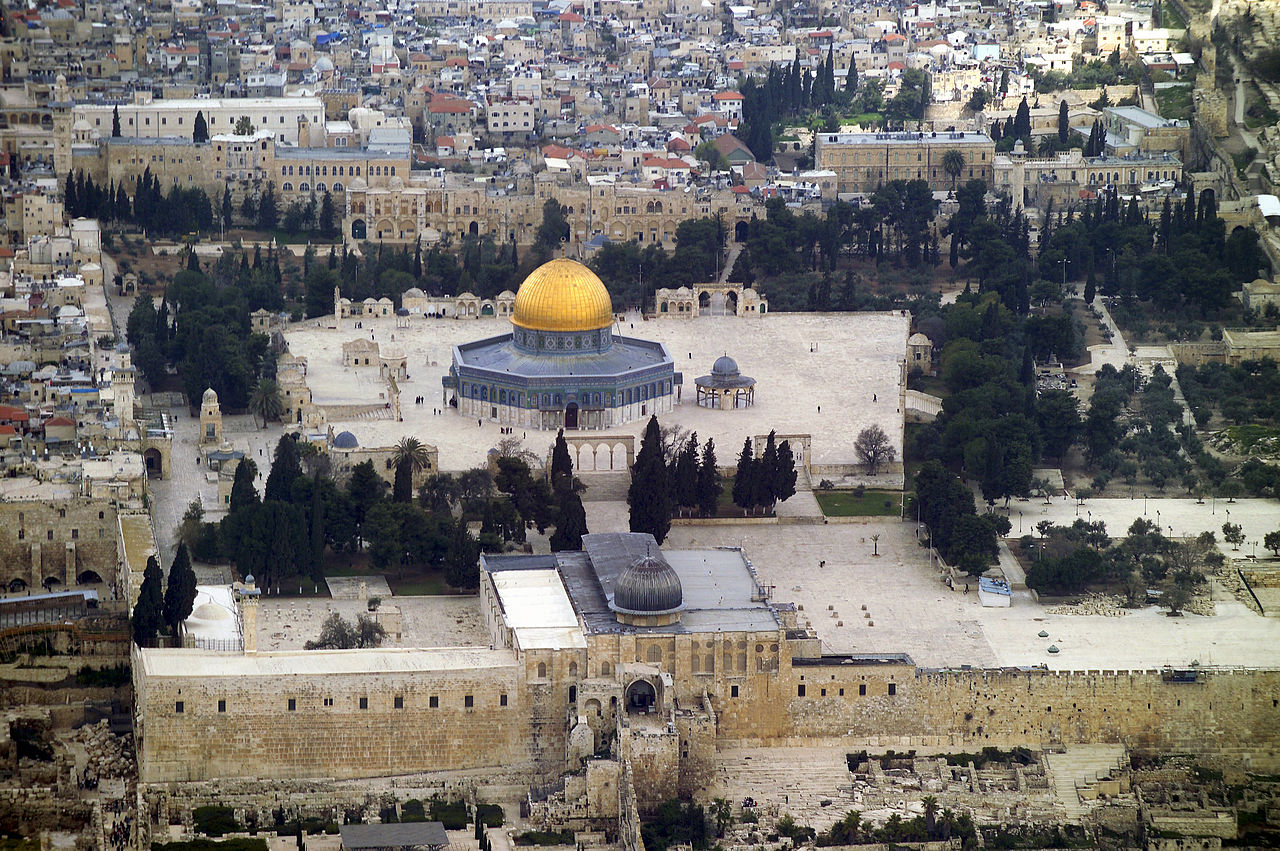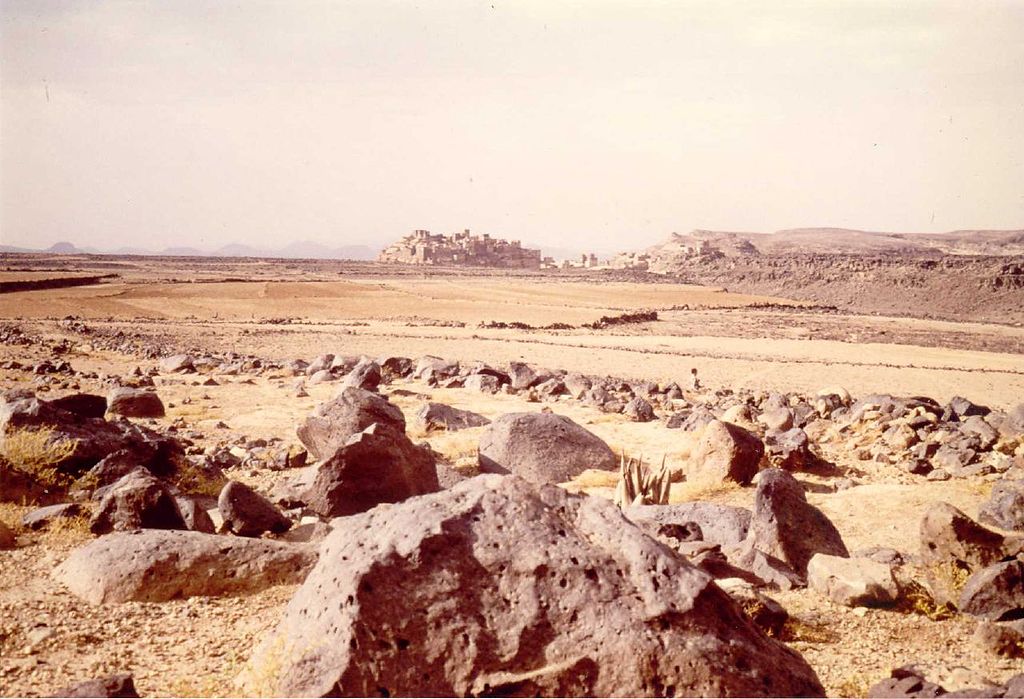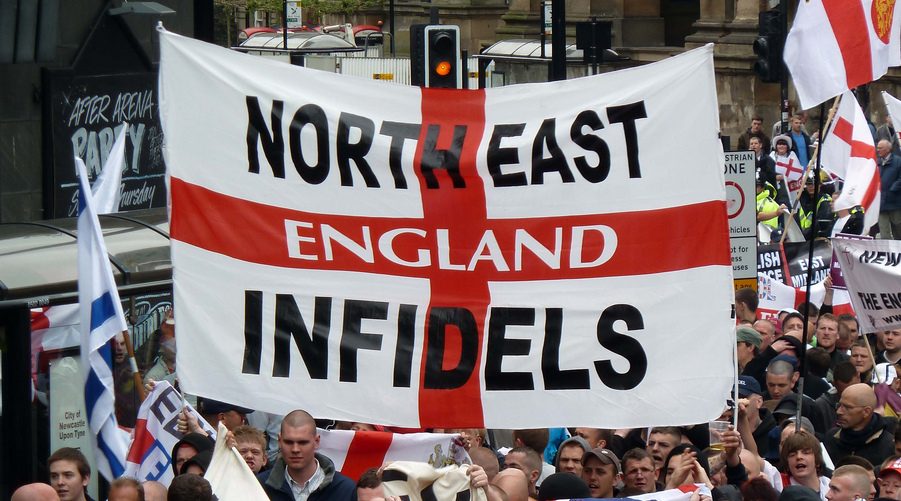By: Usjid Hameed*
US President Donald Trump’s joint press conference with Israeli Prime Minister Benjamin Netanyahu on February 15th, 2017 caused confusion after he said “I’m looking at two-state and one-state… I like the one that both parties like. I’m very happy with the one that both parties like. I can live with either one” regarding the Israeli-Palestinian dispute. [1] The statement’s ambiguity caused a great deal of confusion in the foreign policy arena. Will the US no longer support the two-state solution, its stated policy for decades? Is it a “blank-check” for Netanyahu to continue to settlement expansion with little to no US interference? Or, is it a blunt indictment of the two-state solution and its effectiveness?
The Israeli-Palestinian dispute has plagued the Middle East since the end of WWII. Despite, negotiations, peace treaties, and armed conflict, the region has yet to see a palatable agreement on the matter. Trump’s impromptu remark has once more sparked dialogue concerning the utility of the two-state solution and the role the US should play in the Israeli-Palestinian dispute. This article examines the roadblocks to a two-state solution and possible alternatives. In addition, it argues that a rethinking of American aid to Israel and Palestine can deter Israeli expansionist behavior and strengthen the legitimacy of the Palestinian Authority, thus preserving the hopes for a future peace settlement.
The Roadblocks to Two-States
The history of the conflict is convoluted and, in the eyes of many scholars and practitioners, features various missed opportunities for a settlement agreeable to both sides. Moving forward, there are significant concerns which must be addressed should a desirable two-state peace be achieved. A main dispute is borders. Neither party can agree on how the land should be partitioned. Arab leaders believe the pre-1967 War lines should be followed. However, the barriers constructed along and within the West Bank create a “de facto border” which make the possibility of a truly contiguous and interconnected West Bank unlikely and difficult [2]. The decision of how to partition Jerusalem adds an additional layer of complexity to the border dispute given the city’s religious significance. Currently, Tel Aviv functions as the Israeli capital.
Moreover, Jewish settlements sprawl across the West Bank region, creating future obstacles to an independent Palestine, as removing the settlers will be both a logistically and politically charged task for Israel. Some settlers have been living in the region for decades and have firmly established communities. When the first Oslo Accord talks began in 1993, there were roughly 100,000 Jewish settlers in the West Bank. [3] Today, there are almost 400,000 in 130 different settlements across the region, making up 13% of the West Bank’s population. [4] As noted, removing these settlers would be difficult and may require the use of force, as was seen in 2005 in the Gaza strip.
The topic of settlements raises the second concern, demographics. A crucial aspect of any acceptable deal for the Palestinians must include the right to return to their home, which exists in modern day Israel, as noted above. For Israel, agreeing to such a term is a nonstarter. Palestinian descendants equal 5 million, and if allowed to return, the Arab returnees would outnumber Jews, thus ending Israel’s claim and identity as a Zionist and Jewish state. [5]
The concern of security underlies the frustration and mistrust between both sides. Palestinians wish to end Israeli occupation in the West Bank to return to self-governance. Israelis wish to prevent a Gaza-like takeover in the West Bank and thus are hesitant to remove their forces, as it may create a power vacuum that would allow terror groups to launch attacks upon Israel. The lack of unified Palestinian leadership is, in large part, responsible for these frustrations. Hamas’ split with the Palestinian Authority in 2007 and continued attacks upon Israel have led to aggressive policies by Tel Aviv in not only Gaza, but also the West Bank.
As a result, those in the West Bank who did not facilitate the rise of Hamas must, in a sense, ‘pay the price’ for the terror group’s actions by being subject to Israeli occupation. Stringent policies by Israeli forces only further anger the Palestinian population and encourage additional attacks upon the occupying soldiers. [6] These attacks, including a recent string of stabbings, buttress the Israeli narrative for the need for an occupying force in the West Bank. A never-ending cycle is created in which both sides engage in violence and justify it by citing the other’s use of violence. To achieve a two-state solution, a unified Palestinian voice will need to emerge which is palatable to Israeli leaders, however continued occupation makes the emergence of such a voice difficult, as it empowers groups such as Hamas, the very group it wishes to eliminate.
Where To Go From Here?
The future of the Israeli-Palestinian conflict is shrouded in cynicism and doubt. The two-state solution has various roadblocks which must be overcome to see its realization. President Trump’s lack of concern for the two-state solution may have been indicative of its ineffectiveness. He is not alone in this sentiment. Reza Aslan, a renowned Middle Eastern and religious scholar, argues that the “two-state solution is dead and buried.” [7] Critics argue that the US’s continued dedication to what they regard as an imbalanced peace process, has only facilitated Jewish occupation and settlements, thus erasing the hope of any two-state solution. Others argue that Palestinian ineffectiveness to curb violence by militant groups has spurred Jewish militancy. Some argue both points. With these issues in mind, one must consider how to proceed.
The one-state solution elicits skepticism from both Palestinians and Israelis. It would likely take one of two forms. One, it would grant equal rights to both people, ergo making the state neither Jewish nor Palestinian in character. The other form, advocated by far-right Israelis would be one state with a Jewish identity and a large Palestinian population with second-class status. [8] Both seem unlikely as both could result in war given the tensions which underlie the entire conflict’s history.
Another alternative is to continue the status quo. Many risks also accompany this course of action. The West Bank government has very little legitimacy for reasons including corruption and a perceived ineptitude in dealing with Israel to secure Palestinian liberation. Maintaining the status quo could cause the government to collapse, thus allowing Hamas to seize power and further derailing any chance for stability as Israel would likely pursue military action. In addition, the status quo will allow for the further expansion of Jewish settlements, further complicating a future peace deal.
Rethinking Aid to Affect Change
Washington, regardless of Trump’s comment, is entrenched in the Israeli-Palestinian dispute given its long-standing support for Israel. Uncontrollable factors, such as history and religion, underpin many of the complexities of the situation. To ensure that the prospects of an agreeable solution, two-state or otherwise, remain viable, Washington must focus on what it can control- its aid to both Israel and Palestine. By threatening to pull and/or redirect aid, America can affect Israeli and Palestinian behavior to maintain stability, deter expansionist Israeli behavior, and restore legitimacy in the PA so that groups such as Hamas become less appealing. A more representative PA leads to a more unified Palestinian voice which will ensure that deliberations over a future settlement will be productive and will lessen Israeli security concerns regarding an Arab uprising. These three factors remain critical to ensuring that a semblance of rapport can be built between both parties thus facilitating a solution.
As stated above, Israeli settlements, which violate international law, remain a critical roadblock to a future two-state solution and any sort of rapport between Tel Aviv and the West Bank populace. They are a non-starter for the West Bank populace. America must take a firm stance against them, for a refusal to do so will make it logistically unfeasible to create two states and delegitimize the US’s role as a neutral arbitrator in resolving the dispute. The US’s abstention from the UN vote condemning Israeli settlements and John Kerry’s speech in December 2016 justifying the decision, although deemed ‘too little, too late’ by some, was an important step in ensuring that America is not seen as endorsing settlement expansion.
Along with rhetoric, Washington must create disincentives for expansionist behavior on Tel Aviv’s part. Threatening to decrease aid to Israel is among the most effective, as Tel Aviv’s relationship to Washington is critical to its security. In September 2016, the US and Israel signed a military-assistance deal worth $38 billion, “an increase of roughly 27 percent on the money pledged in the last agreement, which was signed in 2007.” [9] Israel remains “‘the largest cumulative recipient of U.S. foreign assistance since World War II.’” [10] Speeches alone will do nothing to affect Israeli behavior if action does not follow suit. The possibility of a less cooperative relationship with the US, its key patron, would pressure Israel to halt or at least slow its settlements. Israeli security is no doubt of key interest to America, especially in the face of a volatile Syria and rising ISIS presence in Egypt. However, continued aid to Tel Aviv only provides it more capital to fund its settlements and occupying forces, which make it less safe as such behavior empowers groups such as Hamas and Hezbollah, and incites resentment among an already angered West Bank populace. A policy of restricting aid to Israel is unlikely under the Trump Administration given its favorable view of Tel Aviv. Hopefully, future administrations will deter expansionist behavior to ensure that the possibility of a long standing solution remains viable.
The other key shift in US policy must focus on rehabilitating the PA’s reputation. This can be done through a redirecting of aid. As mentioned previously, the Palestinian Authority is quite unpopular. Nevertheless, the US and EU continue to financially prop up the government, committing a total of $30 billion in aid over the past two decades. [11] These funds are primarily for the PA’s security sector, which cooperates heavily with Tel Aviv and is known for using excessive force to suppress protests critical of Israel. Thus, security forces are looked at as collaborators, complicit in Israel’s domination over Palestine. In addition, because Israel is charged with disseminating the aid, “at least 78% of aid money to the West Bank and Gaza is subverted by use for imports from Israel, thereby covering at least 18% (and up to 31%) of the costs of the occupation.” [12]. As a result, to many Palestinians, the aid provided by the West to the PA only facilitates Israeli occupation.
The US must continue funding the PA but redirect how and where the aid is distributed. Another, more neutral party, such as the UN, should distribute the aid so that it does not buttress Israel’s financial standing and support the unpopular occupation. Then, aid must be redirected towards other sectors of the West Bank. Infrastructure, education, and social services have suffered because of the US and PA’s focus on funding the security forces. As a result, the population has become more angered, thus threatening the stability of the region. For example, in March of 2016, massive protests took place in the West Bank as teachers demanded higher wages, resulting in schools being closed for nearly a month. [13] The lack of focus on socio-economic issues, such as unemployment, in the name of “security,” only contribute to the PA’s unpopularity and make groups such as Hamas more appealing to the Palestinian populace which in turn makes Israel less safe and creates more obstacles toward a future solution. A popular and representative government will be needed if an agreeable, long-lasting solution is to be reached. Otherwise, widespread discontentment among the West Bank populace will continue. President Trump’s upcoming meeting with PA President Mahmoud Abbas is highly anticipated as it will reveal how the new administration plans to proceed in its dealings with the PA.
Conclusion
The Israeli-Palestinian conflict is one of the most pressing matters of the 20th and now, 21st century. Its consequences have had a regional impact, inspiring the birth of various armed groups. Peace talks and wars alike have produced little progress. Both sides concerns’ must be considered and heard should any solution be salvaged amid the growing mistrust between them. This mistrust will take time to repair however will be remedied only if stability is present, Israel halts its settlements, and the West Bank populace views the PA as its legitimate representative. Despite Trump’s lack of interest in the conflict, the US has an obligation to change its policy to hold both parties accountable. While the future remains uncertain regarding what type of settlement will be reached, America must utilize its role in the world to ensure that the hopes of a solution remain alive and well.
______________________________________________________________________
- Mark Landler and Peter Baker. Trump, Meeting With Netanyahu, Backs Away From Palestinian State.” The New York Times. February 15, 2017. Accessed February 17, 2017.
- Max Fisher. “The Two-State Solution: What It Is and Why It Hasn’t Happened.” The New York Times. December 29, 2016. Accessed February 26, 2017. https://www.nytimes.com/2016/12/29/world/middleeast/israel-palestinians-two-state-solution.html?_r=0.
- Greg Myre and Larry Kaplow. “7 Things To Know About Israeli Settlements.” NPR. December 29, 2016. Accessed February 26, 2017.
- “Population.” Peace Now. Accessed February 26, 2017. http://peacenow.org.il/en/settlements-watch/settlements-data/population.
- “The Two-State Solution.”
- “The Two-State Solution.”
- Reza Aslan. “The Two-State Dream Is Dead.” NPR. April 26, 2010. Accessed February 26, 2017.
- “The Two-State Solution.”
- Emma Green. “Why Does the United States Give So Much Money to Israel?” The Atlantic. September 15, 2016. Accessed April 09, 2017. https://www.theatlantic.com/international/archive/2016/09/united-states-israel-memorandum-of-understanding-military-aid/500192/.
- “Why Does the United States.”
- Alaa Tartir. “How US security aid to PA sustains Israel’s occupation.” News from Al Jazeera. December 02, 2016. Accessed April 09, 2017. http://www.aljazeera.com/indepth/features/2016/11/security-aid-pa-sustains-israel-occupation-161103120213593.html.
- “How Much International Aid to Palestinians Ends Up in the Israeli Economy? | Aid Watch Palestine.” How Much International Aid to Palestinians Ends Up in the Israeli Economy? | Aid Watch Palestine. Accessed April 09, 2017. http://www.aidwatch.ps/content/how-much-aid.
- “How US security aid to PA.”
*Disclaimer: The content contained in the following material is the sole ownership of the author and does not reflect the views of the Towson University Journal of International Affairs nor Towson University in any respect whatsoever







